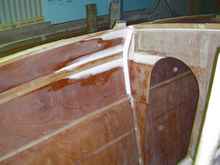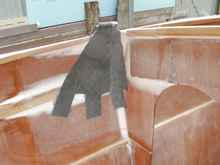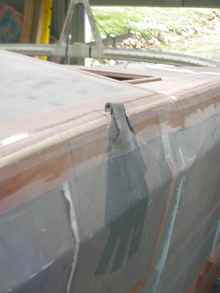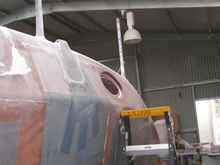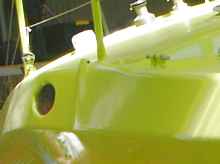
 Custom Search
|
|
| sails |
| plans |
| epoxy |
| rope/line |
| hardware |
| canoe/Kayak |
| sailmaking |
| materials |
| models |
| media |
| tools |
| gear |
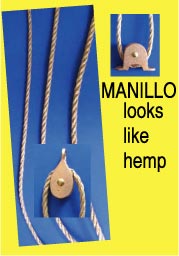 |
 |
| join |
| home |
| indexes |
| classifieds |
| calendar |
| archives |
| about |
| links |
| Join Duckworks Get free newsletter Comment on articles CLICK HERE |
|
|
| Chainplates |
by Bernd Kohler - The Netherlands |
Here an article how to make chain plates from carbon fiber and glass cloth. I was using these in a small way already for my own SC 435. Andrew dit not only made his stay connectors but also the cleats and rudder gudgeons in a similar way. Generally it is the way to go with materials we can get today - better load distribution, no corrosion, no leaking bolt holes etc. Here a link to a video I posted for Andrew. New materials give us possibilities to build better boats. Some of them you will never see on production boats. One of them is having chain plates for stays made from artificial material like uni directional carbon fiber and glass fiber. The advantage is an evenly distributed load on the hull. Chain plates on hulls impose stress points through the fasteners of the chain plate. So these areas must be beefed up with packing material. Over the years the bolts have the tendency to leak. Even when the chain plates are made from stainless steel and the fasteners are stainless steel bolts they can start to corrode. This is because the stainless steel in the bolts is a different material to the flat chainplate. Here a short description how to make 'organic' fastening points for stays. Start by fairing the area where the fastening point has to be build up. If necessary add fillets to smooth the area.
Build up a distance piece from plywood. Prepare a short piece of PVC tube about 80 mm wide, diameter about 20mm to receive the stay. For small boats this can be a eyelet.
Apply the first layer of uni directional carbon fiber. Fan these layers out as shown. The strands go from the outside to the inside in the same pattern and length. The u.d. strands have to be fanned out as shown. This way the load is distributed evenly over the hull.
Next comes a layer of glass cloth. Generous overlap the U.D. strands inside and outside. The result is as I call it an "organic" boat. The load gets more evenly spread as with a connection with bolts - better stress relief and no chance of leaks through bolt holes.
Website: www.ikarus342000.com
|
 |
